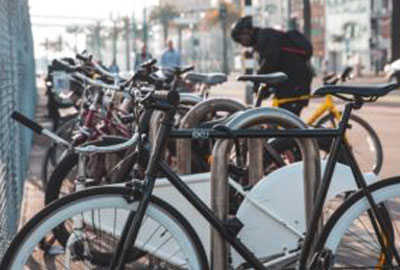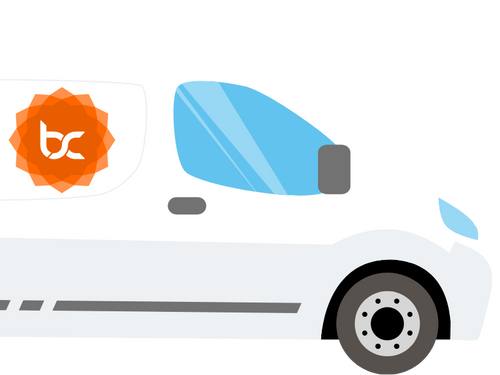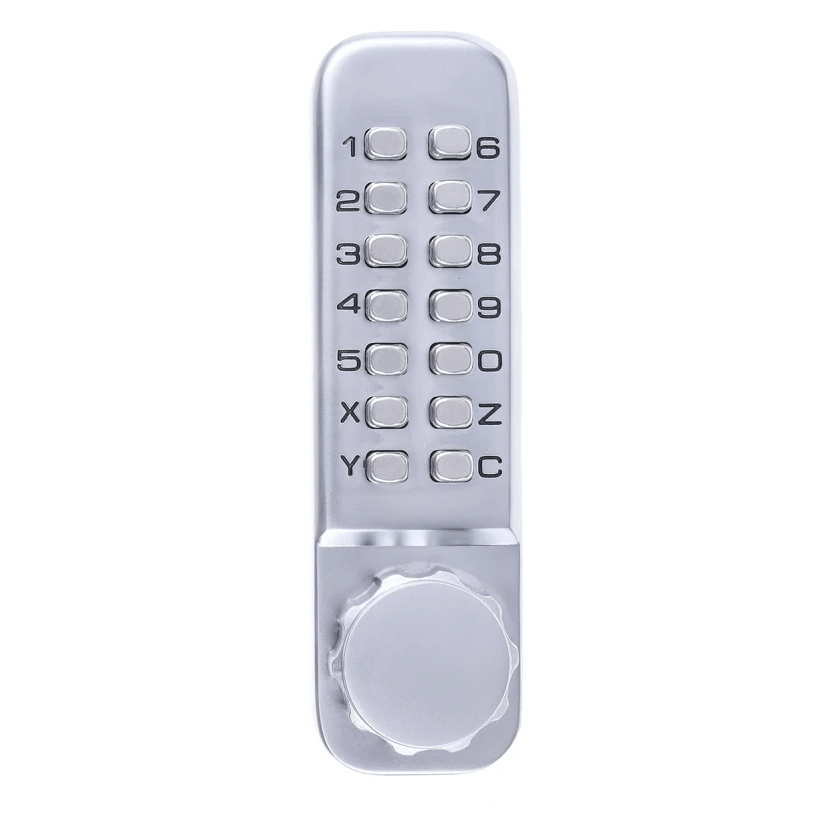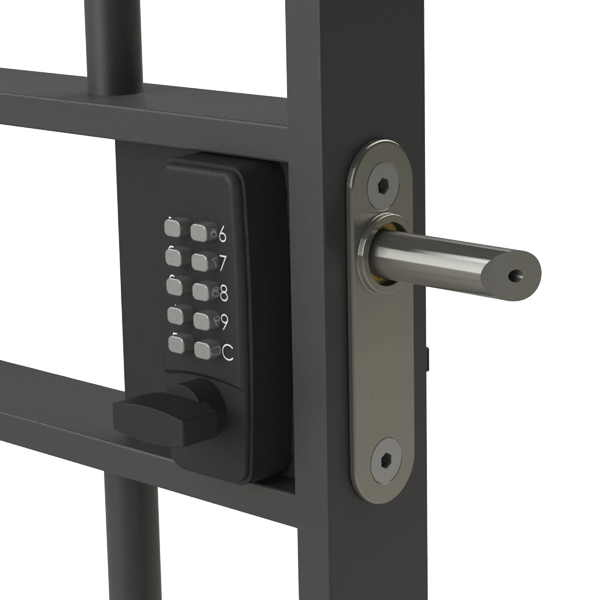Bike theft can cause considerable disruption to your daily life, especially if you’re one of the growing number of people who cycles to and from work, school, or university. With more people using bikes, working out how to prevent bike theft is important.
According to the Office of National Statistics, a person commits bike theft if they take a pedal cycle for their own or another’s use without the consent of the owner or other lawful authority, or ride a pedal cycle knowing it to have been taken without such authority.
The Crime Survey for England and Wales (CSEW) has collected data about bike theft since it was introduced in 1981. It’s a relatively small offence, accounting for approximately 5% of all crime covered by the survey, and the number of reported bike thefts has declined since 2012.
However, that doesn’t mean you can forget about security. Many thieves are opportunists, and are more likely to take a bike if it’s easy to do so without getting caught. The cost of bikes has increased, too, giving people more incentive to try and sell them on. The more secure your bike, the less likely it is to be stolen.
PREVENTING BIKE THEFT BEFORE YOU LEAVE THE HOUSE
There are a number of things you can do to reduce the chance of bike theft before you’ve even gone for your first ride.
Register your bike with a scheme
A lost or stolen bike is more likely to be recovered if it’s listed on a database. You can sign up for a property register like Immobilise, or a specialist scheme like Bike Register(also known as The National Cycle Database).
IMMOBILISE
Immobilise is a free database where you can register your valuables, including bikes. It can be used by individuals or businesses. Registered items and their ownership details appear on the Police National Property Database.
BIKE REGISTER
Bike Register is a national, police-approved bike database. It’s free, with the option to buy a security marking kit. You get lifetime registration, and a logbook which counts as proof of ownership.
Write your postcode somewhere on the bike frame, or use a unique ID code
A potential thief is less likely to steal your bike if they can see it’s been registered and could be recovered. There are lots of do-it-yourself bike marking kits available to buy online, and some police forces distribute them for free at local events.
Write down a description of your bike, and photograph any distinctive markings
This will give police a specific list of features to look for in the event of a theft. The more unique your bike, the easier it is to identify.
USEFUL INFORMATION YOU CAN INCLUDE:
- Frame number
- Make/model
- Size
- Colour(s)
- Any other notable features (e.g. added accessories like lights or a basket)
Look into bicycle insurance
Bicycle insurance covers the cost of repairs or a replacement if your bike gets damaged or stolen. You can also add extras like personal cover, which offers protection if you have an accident, or cause an incident while you’re riding.
DO I NEED INSURANCE FOR MY BIKE?
Bike insurance isn’t compulsory. But it’s worth considering if your bike is expensive, or if you use it every day. If you take part in events like races and triathlons, you’ll need to state this when you get a quote.
Your home contents insurance policy might cover theft or vandalism (check the policy details to find out). However, your bike may not be covered when you’re riding, or if you secure it to a public rack or shelter. Always read the terms and conditions so you can make an informed decision.
STORING YOUR BIKE IN PUBLIC PLACES
It’s inevitable that you’ll need to store your bike in a public place if you ride regularly. And while you’ll never be able to guarantee your bike won’t get stolen, there are plenty of precautions you can take to reduce the chance of it happening. Finding good cycle storage is crucial when storing your bike in public spaces.
Store your bike somewhere busy, preferably near a CCTV camera
A camera will deter anyone who’s thinking about stealing a bike. CCTV footage can be used to identify criminals and stolen goods. It’s also a way of alerting the public to the incident, and it may trigger memories from witnesses with useful information.
Always use a bike lock
Even if you won’t be gone for long, a lock is still an extra barrier potential thieves have to get past before they can take your bike.
Not all locks are very effective. Some can be cut with a hacksaw or even a strong pair of scissors, while others are easy to pick in a matter of minutes. It’s important to shop around to find one that works.
Bike Exchange recommend buying the best one you can afford, since cost is usually an indicator of quality in this instance. Look for materials like hardened steel, which are strong and heavy, and therefore more difficult to cut.
You can also keep an eye out for bike locks with Sold Secure ratings. Sold Secure test locks and award them with a rating out of gold, silver and bronze. Gold locks offers the highest level of security, while silver locks are less secure but also more affordable. Bronze locks offer defence against an opportunistic thief.
DIFFERENT TYPES OF BIKE LOCK
- U-lock (also known as a D-lock): These look like giant padlocks and are made from thick, reinforced metal. They’re normally a reliable choice for your main lock, although it’s worth noting that some are stronger than others.
- Chain lock: A chain secured with a padlock. Can be used with lots of different storage solutions.
- Cable lock: The same as a chain lock, but with a cable instead, making them more lightweight. They are easier to carry around than other types of lock, but are less secure and shouldn’t be used as your main lock.
- Anchors: These are drilled into the ground or the wall to create a secure object you can attach your bike to. They’re most useful in home storage spaces like your garage or shed.
LOCKING YOUR BIKE
DO:
- Secure your bike to an object that can’t be moved, like railings or a specially designed rack or shelter. Give it a gentle push and make sure it’s secured to the floor.
- Place the lock as close to the bottom bracket as possible.
- Try and keep the lock from resting on the floor, where it’s easier for for thieves to use bolt cutters. They can’t get any leverage in the air.
- Consider using two locks – a U-lock for the frame and a chain or cable lock for the wheels. Your bike will be far from an easy target for thieves if they have to pick two locks instead of one.
DON’T:
- Fit your lock too loosely. The more leverage a thief has, the easier it is for them to break the lock and take your bike.
- Forget to make sure your lock faces the ground. Some thieves fill the mechanisms with glue so the owner abandons their bike, then go back and steal it at a later date.
- Flaunt the branding on your bike. Thieves are more likely to take something they can sell on. Consider covering any logos with electrical tape.
Consider using a tracker
Bike security is improving as technology develops. You can buy a separate GPS tracker, or you can look for a lock which incorporates features like tracking, motion detection, and keyless entry. You can even install an alarm – many of the newest bike alarms have adjustable settings and can be controlled remotely.
STORING YOUR BIKE AT HOME
It’s natural to feel like your bike will be safer when it’s at home. However, this sense of security can understandably lead us to grow lax about our possessions, and some thieves are very savvy about noticing when a bike can be stolen from a residential area. Always take precautions.
Store your bike behind a locked door
Whether it’s in a shed or garage, a locked door keeps your bike out of view and immediately provides a barrier for the potential thief. You could secure your bike with a lock inside the building if you wanted to be extra cautious.
Install an alarm
If your shed or garage doesn’t already have an alarm system, now is the time to get one. The noise alone is normally enough to make an intruder think twice, and chances are they’ll make their escape before taking anything.
WHAT TO DO IF YOUR BIKE DOES GET STOLEN
Report the theft to the police
Call or visit your local police station and give them as much information as you can. (Call 101 if you live in London – you’ll be able to report the theft to the Metropolitan Police Service). Be sure to ask for your CAD (Computer Aided Despatch) or CRIS (Crime Reference Information System) number so you can track your case’s progress. You may need this number if you make an insurance claim.
If your bike is stolen from the train or tube, call the British Transport Police instead.
Let your insurance company know
Notify your insurance company as soon as you’ve reported the theft to the police, and give them exactly the same details. They’ll be able to give you advice and help if you decide to pursue a claim.
Look at bike sellers online
Thieves normally try and sell stolen bikes on websites like eBay and Gumtree. Keep an eye out for any bikes that resemble yours – you could even set up an account and receive notifications when bikes matching your description are listed. Contact the police, not the seller, if you think you’ve found your bike.
While you can never guarantee your bike won’t be a target, you can do everything in your power to prevent theft.









